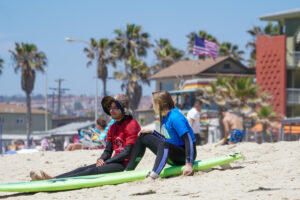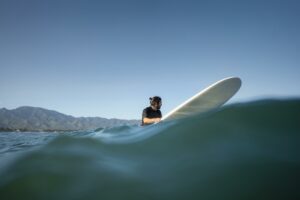Do you want to learn to surf, but don’t know how to get started?
It can feel intimidating when you’re learning how to surf. You need to figure out important things such as understanding where to catch waves, choosing the right gear, and knowing the proper etiquette while out on the water.
Many people never end up going surfing because they think it’s too difficult. If you know about surfing tips for beginners, you’ll start catching waves in no time. If you want to find out how to start surfing, read on, and we’ll tell you what you need to know.
1. Know the Right Locations
It’s a good idea to ask around your neighborhood if you don’t know where to catch good waves. Keep in mind that beginner surfers should choose locations where the waves are small and where there are no jagged rocks.
Another good way to find where to start surfing is by taking notice of where other beginner surfers are going. You’ll probably see groups of people taking classes who are trying to catch their first waves.
2. Know How to Spot the Right Waves
Before you start learning how to surf, you first need to know how to identify the best waves. The first thing to do is scout out the beaches.
You can do this by making a drive along the coast near where you live while keeping an eye out for great breaks. If you still don’t know how to know what to look for in a break, simply keep an eye out for beaches where you see other surfers.
You can also do an online search to find out about the top surfing beaches in your area.
3. Take Your Time and Do What Feels Safe
Once you find the right beach, take time to take notice of what other surfers are doing. You should also observe how the waves are breaking and how much time is passing between sets.
If you don’t see any other beginner surfers catching waves or if the waves are too big, don’t get in the water. If you never caught a wave, it’s a better idea to first take surfing lessons and to learn about the top surfing safety tips.
4. Before Getting Into the Water, Pick a Landmark
It’s easy for those who are surfing for the first time to drift around while they’re trying to catch a wave. This is because there are ocean currents that flow in unexpected directions.
This is why experienced surfers always pick a landmark on the shore. This will make it easier for you to stay where you need to be to catch the best waves. The best place for you to be is on the outside, where the waves are breaking.
5. Know How to Choose the Right Board
If you don’t know how to choose and care for your board, it will be much more difficult for you to stand up on your board.
As a beginner, you should choose a longboard that has a rounder template, and is more buoyant. This will help you to avoid wipeouts.
6. Don’t Forget to Wax
It’s also important that you wax your board every time before you get into the water.
You’ll know you’ve waxed your board correctly when the board’s texture gets bumpy. This will give your feet something to grip when you jump onto the board to catch a wave.
7. Use Your Leash
You should never go surfing without a leash. By wearing one, you’ll prevent your board from colliding with other surfers. It will also save you lots of time since you won’t have to swim after your surfboard every time that you fall off of it.
You should wrap your leash around your back foot and make sure that the leash is pointing away from your ankle. If the leash is hanging from the other side, you’ll probably end up tripping on it.
8. Balance Yourself Before Setting Out to Catch a Wave
Distribute your body as evenly as you can across the board so that it’s easier to keep it balanced.
The nose should be about an inch above the ground. Before you’re ready to catch waves, it’s going to be important that you learn how to stay balanced.
9. Practice Your Pop-up on the Sand
You need to master the pop-up before setting out into the ocean. Place your board on the sand and dig a hole for the fins. Then lay on the board with the tops of your feet touching the end of the board.
Raise your arms and chest while paddling with your arms at either side of the board. Imagine a wave is catching your board and grip the board’s sides along your ribs and press yourself up. At the same time, swing your feet under your body and onto the board.
Your body should now be parallel to the board with your dominant foot pointing to the front of the board.
10. Figure Out the Timing
When you’re ready to go catch a wave, you’ll need to figure out how to time yourself with the wave.
If you start paddling and stand up on your board too early, you’ll be too far ahead of the wave to catch it. If you stand up too late, the wave will roll on top of you.
Know the Top Surfing Tips for Beginners
It takes time to learn how to surf, but once you know how, you’re probably going to love it. There is no reason that you need to learn how to surf on your own. When you’re starting out, it’s important to know the top surfing tips for beginners.
Are you interested in renting a surfboard and taking surfboard lessons in San Diego? If so, then Pacific Surf is waiting to help you. We offer surf lessons for people of all skills and abilities. We also have surf camps for children and teens. Click here to learn more about our private surf lessons.




